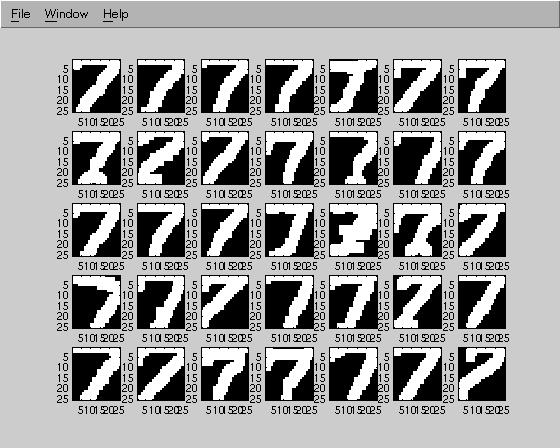
Graygrid takes a 25 X 25 pixel image of a number and takes the average of the pixels contained within each adjacent 5 X 5 pixel area. We often found that the resulting 5 X 5 pixel image did not always look like the original image, but by averaging the graygrid results of the same number from several fonts, we got a little closer to what we were looking for.
Using the parse2std function, we displayed all 35 versions of the number seven from our data set of fonts:

After lengthy analysis of our results, we came to the conclusion that there were four main characteristics that might distinguish one image of a seven from another.
| OVERHANG | 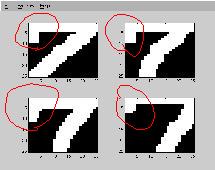 |
NO OVERHANG | 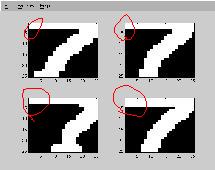 |
| TAIL HITS BOTTOM MIDDLE | 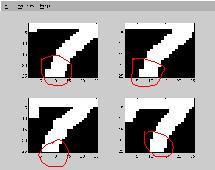 |
TAIL HITS BOTTOM LEFT CORNER | 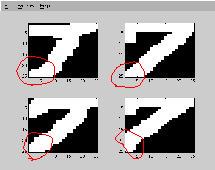 |
By averaging the graygrid results of the fonts that exhibited these
specific characteristics, we ended up with four standard profiles for the
number seven.
Other Standard Profiles
[0] [1] [2] [3] [4] [5] [6] [8] [9]
 |
Next

|
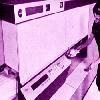 Previous
Previous
|